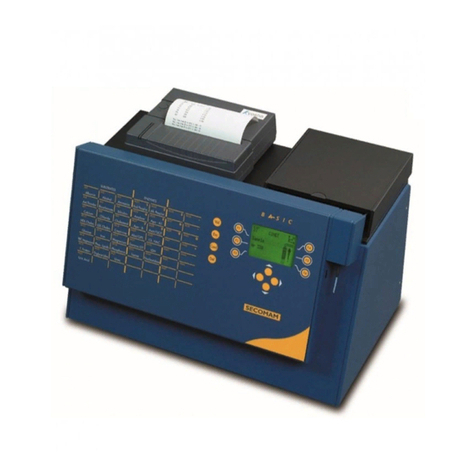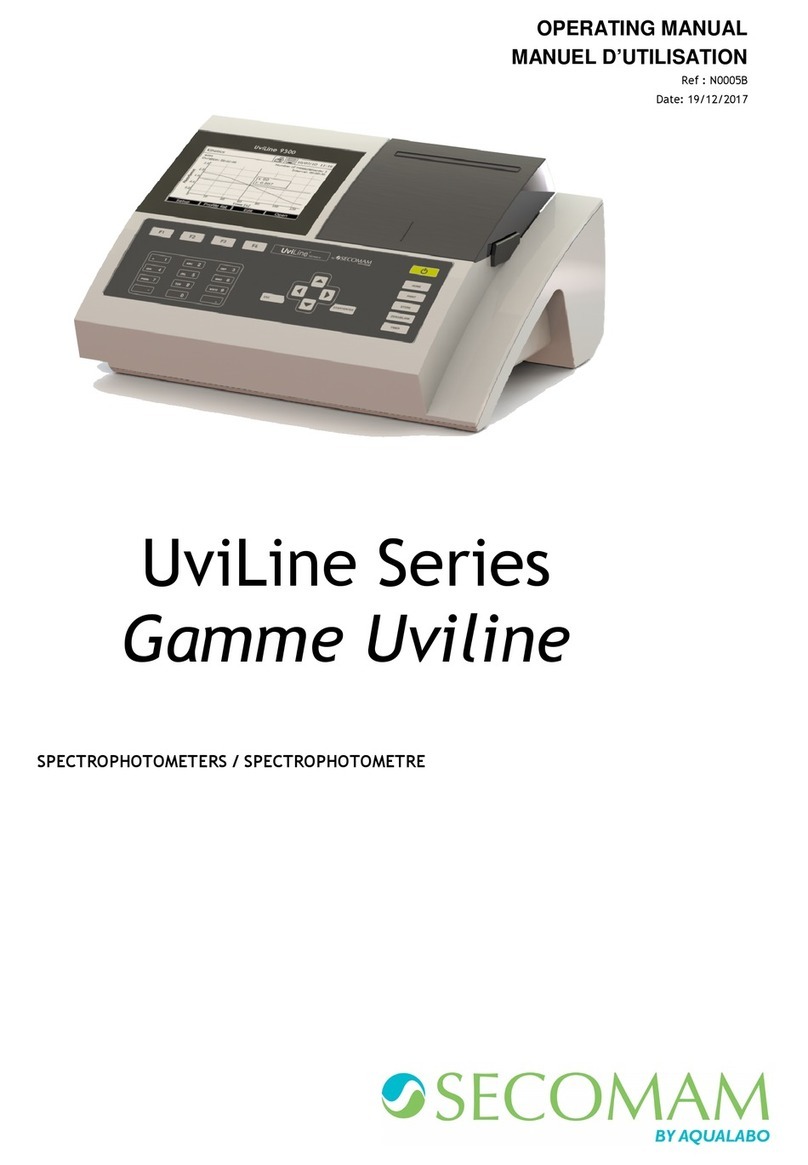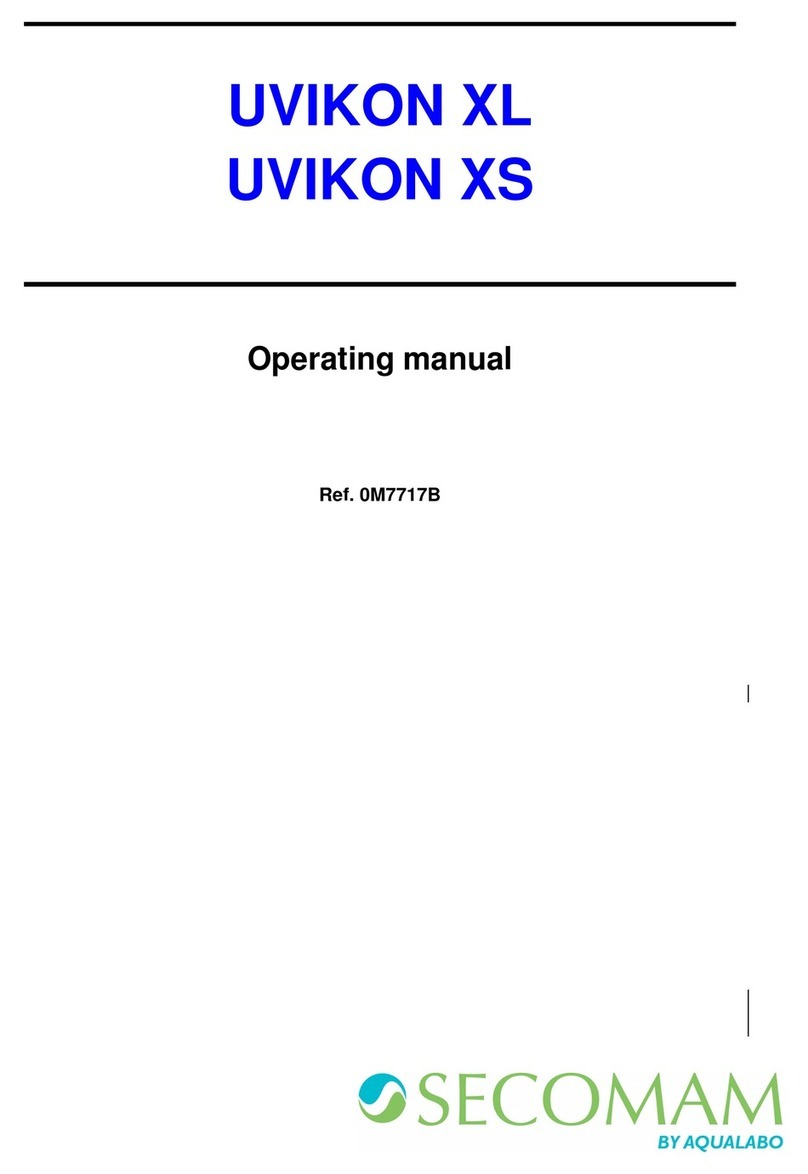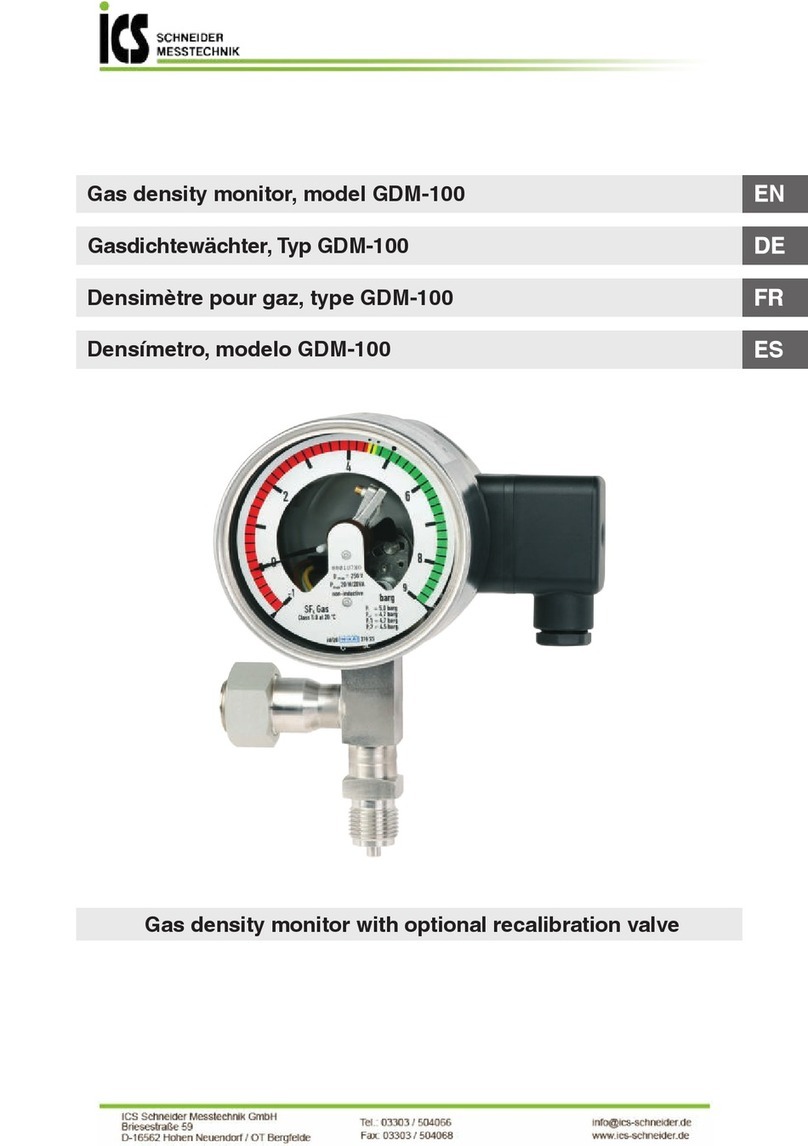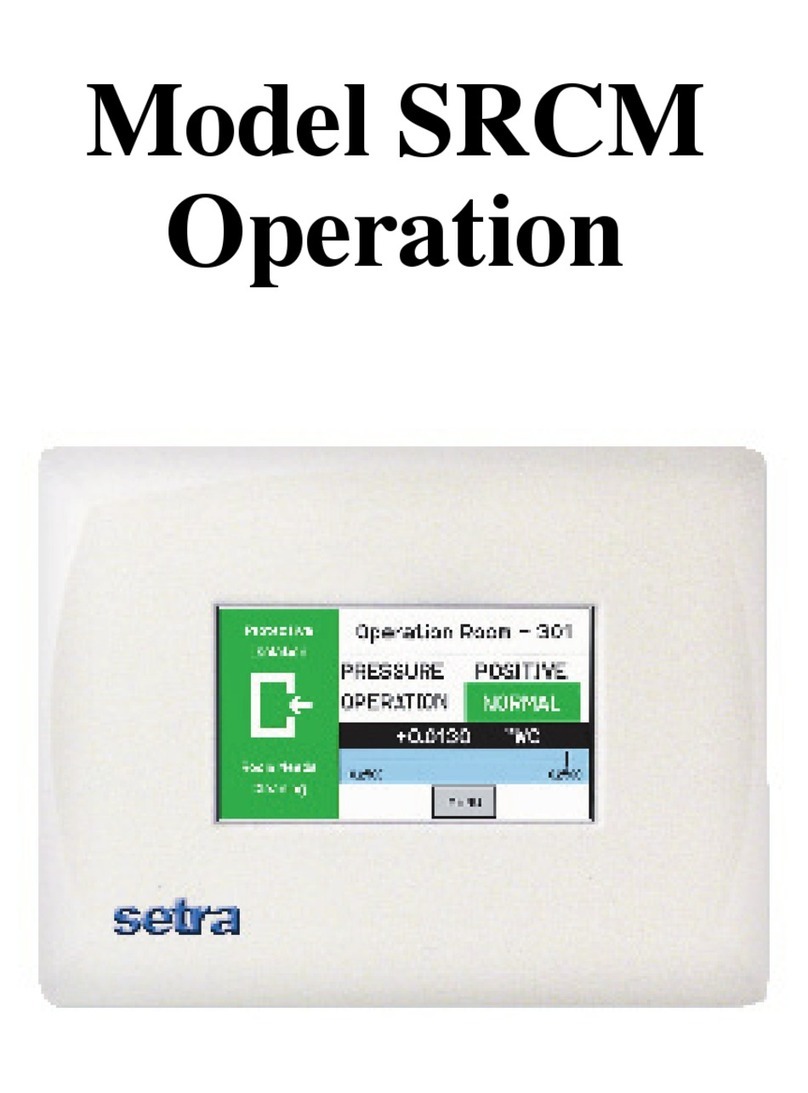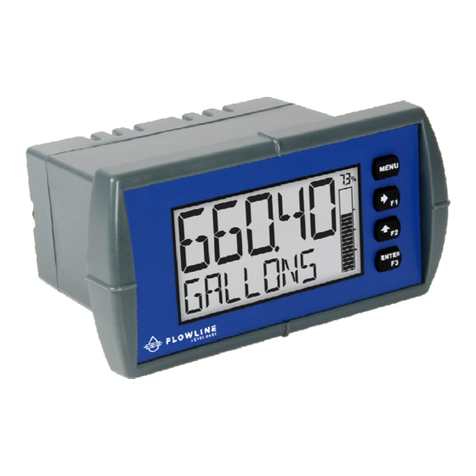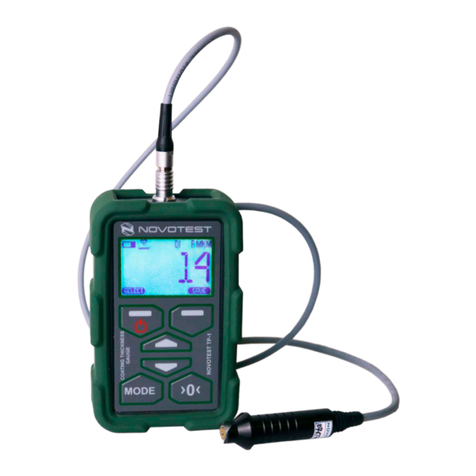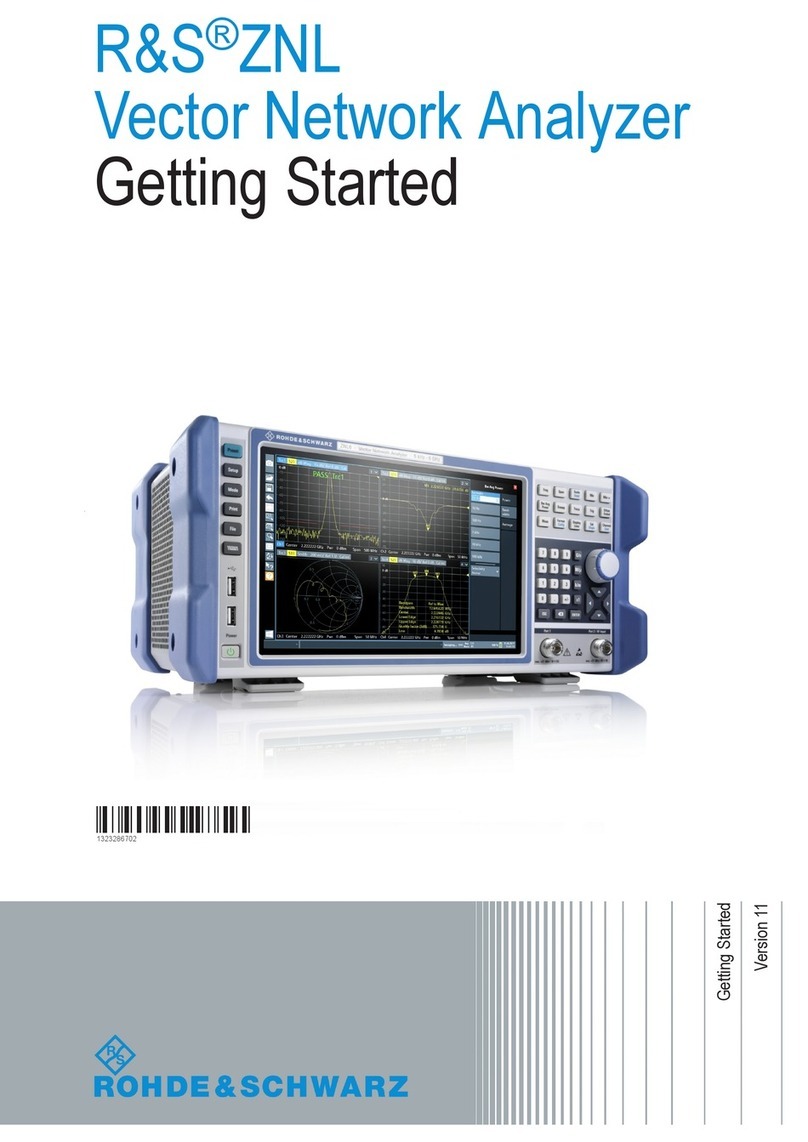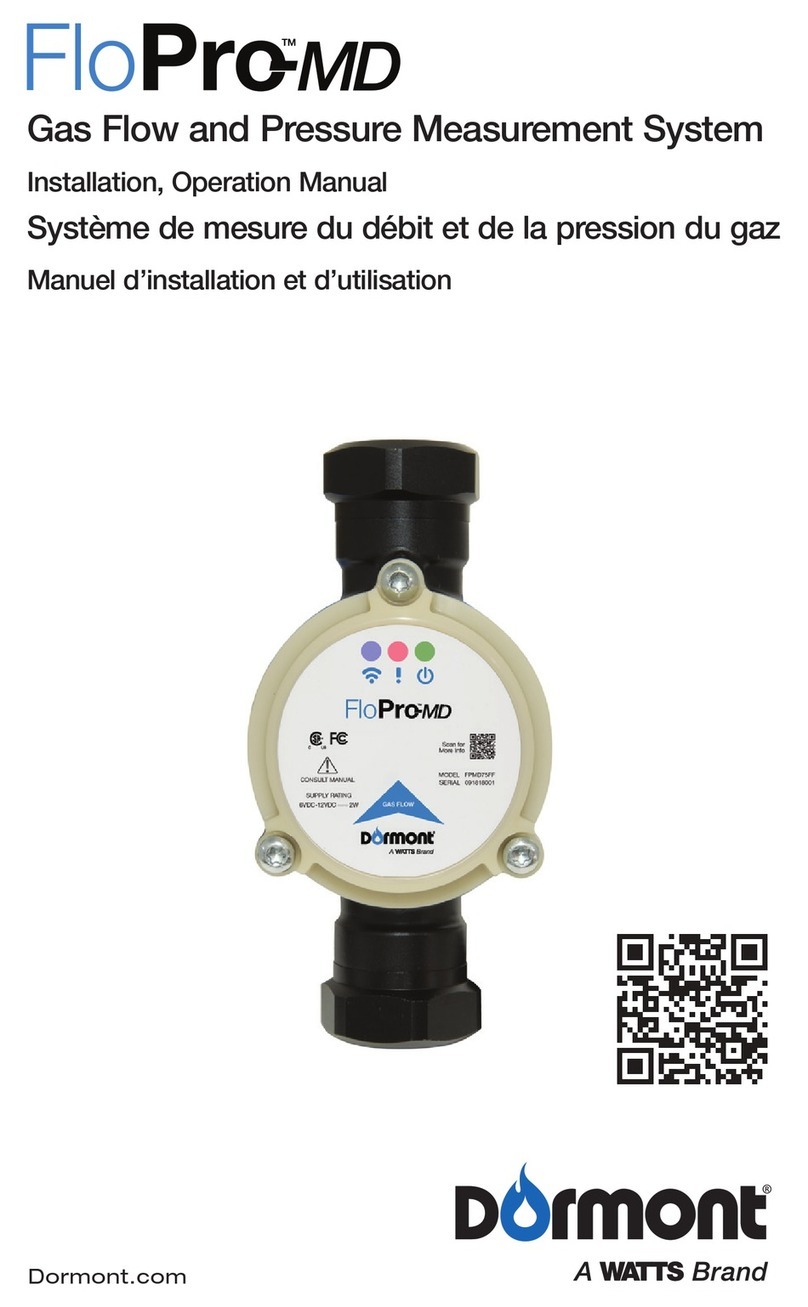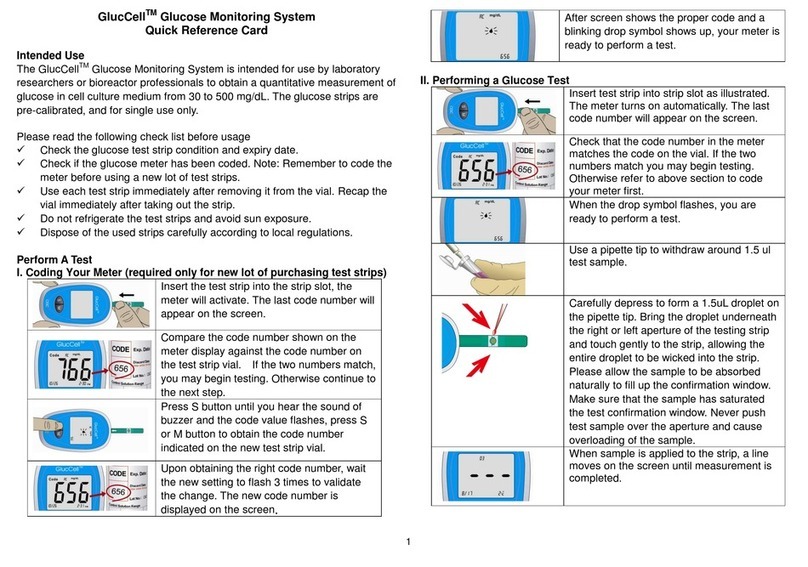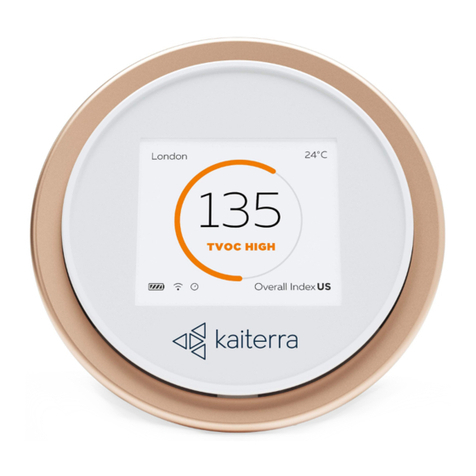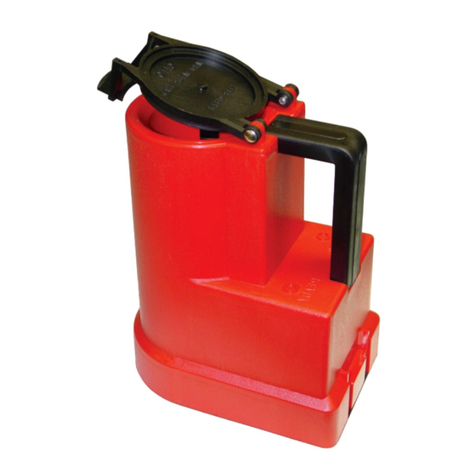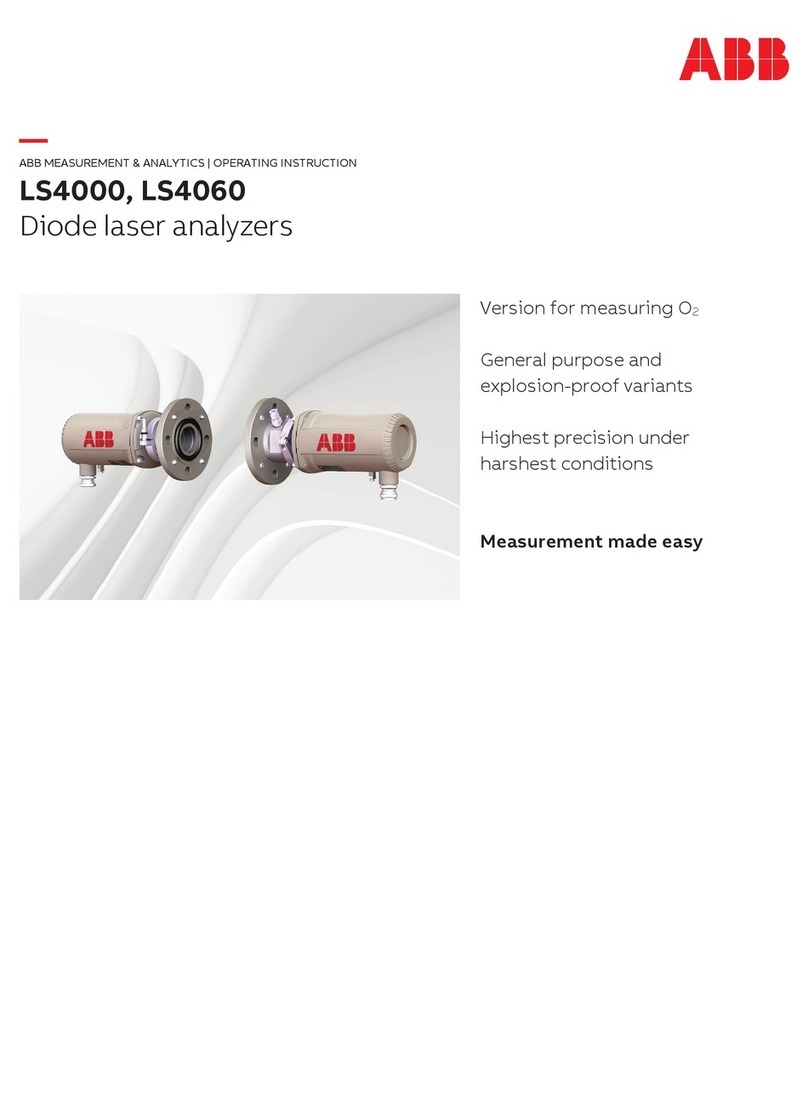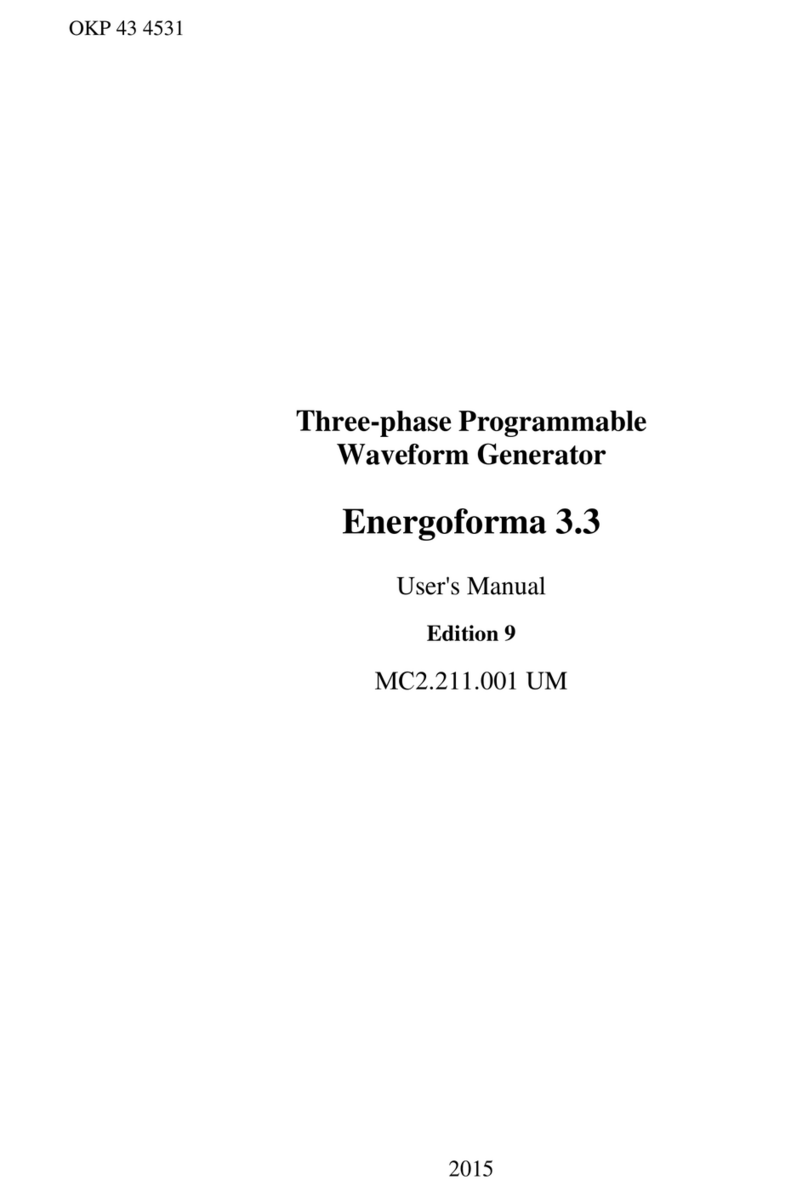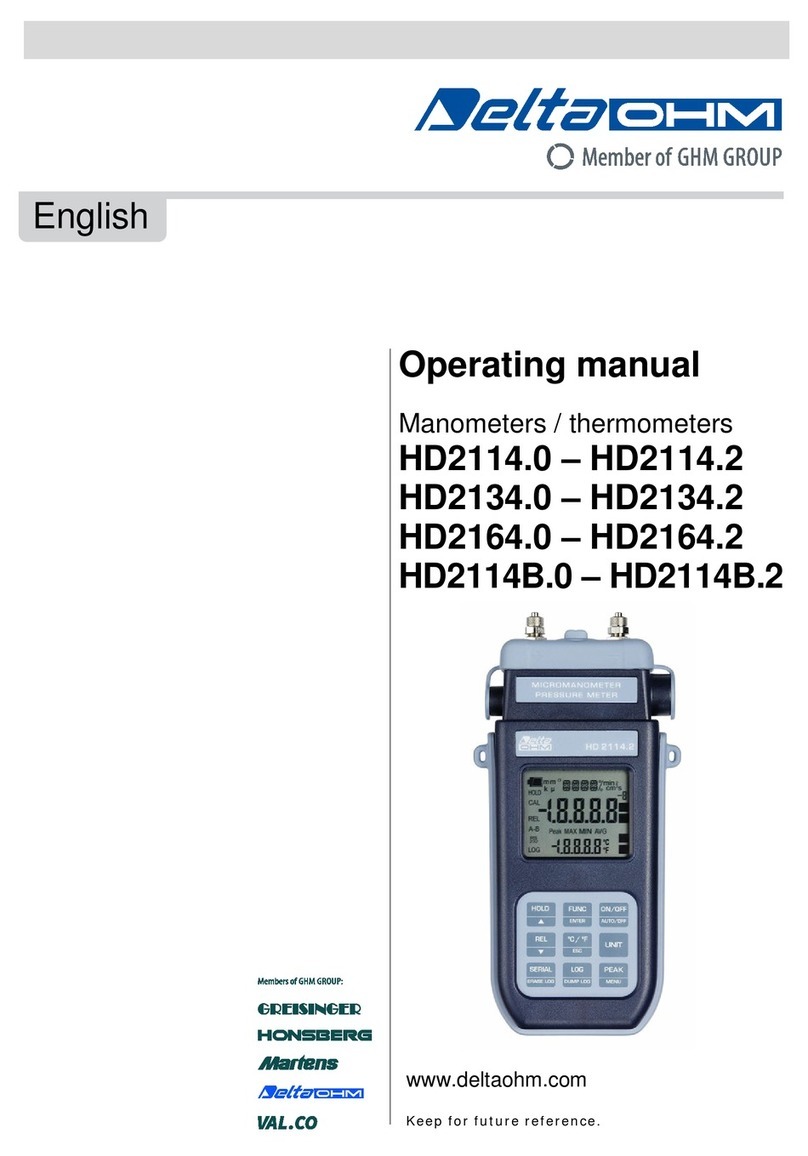Secomam STAC User manual

USER MANUAL
Ref. 0M8950
Manual version: 2.6
STAC
ON-LINE ANALYZER

STAC
- 2 -

STAC
- 3 -
SUMMARY
1 REMARK ........................................................................................................................................................... 5
2 WARRANTY...................................................................................................................................................... 6
3 INFORMATION................................................................................................................................................ 8
4 PRECAUTIONS OF USE ............................................................................................................................... 10
5 INSTALLATION............................................................................................................................................. 12
5.1
ANALYZER
INSTALLATION.................................................................................................................. 12
5.2
ANALYZER
DESCRIPTION..................................................................................................................... 12
5.2.1 ELECTRONIC CASE ........................................................................................................................... 13
5.2.1.1 Dimensions...................................................................................................................................................... 13
5.2.1.2 Description...................................................................................................................................................... 13
5.2.2 FLOWING CASE ................................................................................................................................. 14
5.2.2.1 Dimensions...................................................................................................................................................... 14
5.2.2.2 Description...................................................................................................................................................... 14
5.2.3 MONOCHROMATOR CASE ............................................................................................................... 15
5.2.3.1 Dimensions...................................................................................................................................................... 15
5.2.3.2 Description...................................................................................................................................................... 15
5.2.4 POWER SUPPLY CASE ...................................................................................................................... 15
5.3
FLUIDS
CONNECTION............................................................................................................................ 16
5.4
SAMPLE
INLET......................................................................................................................................... 17
5.4.1 PERISTALTIC PUMP RATE OF FLOW ............................................................................................. 17
5.4.2 SAMPLE CHARACTERISTICS............................................................................................................ 17
5.4.3 TAKING SAMPLE CONSTRAINTS ..................................................................................................... 17
5.4.4 OVERFLOW CAN................................................................................................................................ 18
5.4.5 RINSING SOLUTION .......................................................................................................................... 19
5.4.6 BLANK SOLUTION ............................................................................................................................. 19
5.4.6.1 Some definitions.............................................................................................................................................. 19
5.4.6.2 The blank solution........................................................................................................................................... 20
5.5
ELECTRICAL
CONNECTIONS................................................................................................................ 21
5.5.1 GENERAL WIRING............................................................................................................................. 21
5.5.2 POWER SUPPLY................................................................................................................................. 23
5.5.3 RS232 CONNECTION ......................................................................................................................... 24
5.5.3.1 Connection characteristics............................................................................................................................... 24
5.5.3.2 Data size.......................................................................................................................................................... 24
5.5.3.3 Data transmission rate..................................................................................................................................... 24
5.5.3.4 Connection with a modem............................................................................................................................... 24
5.5.4 CURRENT LOOP CONNECTION....................................................................................................... 25
5.5.4.1 Current loop for blank energy level................................................................................................................. 26
5.5.4.2 Current loop for restitution gap....................................................................................................................... 27
5.5.4.3 Current loops for parameters concentration .................................................................................................... 28
6 START UP AND MEASURE ......................................................................................................................... 30
6.1
MEASURE.................................................................................................................................................. 30
6.1.1 MEASURING SEQUENCE.................................................................................................................. 30
6.1.2 MEASURING ERROR CODES............................................................................................................ 32
6.2
SET-UP....................................................................................................................................................... 33
6.2.1 CHOICE OF LANGUAGE AND DATE............................................................................................... 33
6.2.2 CHOICE OF CHANNELS NUMBER................................................................................................... 34
6.2.3 CHANNEL PROGRAMMING.............................................................................................................. 34
6.2.3.1 Pump working time, cadence, pump overrun.................................................................................................. 35
6.2.3.2 Rinsing channel programming ........................................................................................................................ 36
6.2.3.3 Blank channel programming ........................................................................................................................... 36

STAC
- 4 -
6.2.3.4 Sample channel programming......................................................................................................................... 37
6.2.3.4.1
Selection of water type and parameters number................................................................................... 37
6.2.3.4.2
Selection of measuring parameters....................................................................................................... 38
6.2.3.4.3
Programming of 4-20 mA outputs ....................................................................................................... 38
6.2.3.4.4
Restitution............................................................................................................................................ 39
6.2.3.4.5
Programming of cycles of rinsing, measures and dilution.................................................................... 39
6.2.3.4.6
Dilution................................................................................................................................................ 40
6.3
EXPORT
THE
255
LAST
RESULTS ......................................................................................................... 41
6.3.1 CHOICE OF THE TYPE OF EXIT LINK (PC or printer)................................................................... 41
6.3.2 EXPORTATION ON P.C...................................................................................................................... 41
6.3.3 EXPORTATION ON PRINTER............................................................................................................ 42
6.4
RECALIBRATION..................................................................................................................................... 43
6.4.1 IMPRESSION OF CALIBRATION COEFFICIENT ............................................................................ 43
6.4.2 MODIFICATION OF CALIBRATION COEFFICIENTS..................................................................... 44
6.4.3 CHOICE BETWEEN NO3 AND NNO3 ............................................................................................... 44
6.4.4 TEST LOOP 4-20 MA .......................................................................................................................... 45
6.4.5 ENTER THE SECRET CODE.............................................................................................................. 46
6.4.6 OUTPUT SELECTION ........................................................................................................................ 46
6.5
PILOTING
BY
A
PC................................................................................................................................... 48
7 START UP PROCEDURE.............................................................................................................................. 50
8 STAND-BY & STORAGE PROCEDURE .................................................................................................... 54
9 MAINTENANCE............................................................................................................................................. 56
9.1
PRECAUTIONS
FOR
USING.................................................................................................................... 56
9.2
FLOW-THROUGH
CUVETTE
MAINTENANCE.................................................................................... 56
9.3
DEUTERIUM
LAMP
CHANGING............................................................................................................ 59
9.4
PERISTALTIC
PUMP................................................................................................................................ 61
9.4.1 PERISTALTIC PUMP TUBE CHANGING.......................................................................................... 61
9.4.2 CHANGING PERISTALTIC PUMP WHEEL ...................................................................................... 62
9.5
DISPLAY
BACKLIT
ADJUSTMENT....................................................................................................... 65
9.6
REPLACEMENT
FREQUENCY
OF
SPARE
PARTS............................................................................... 65
10 SPARE PARTS .............................................................................................................................................. 66
APPENDIX: INDICATIVE CHART OF TUBE IN TYGON COMPATIBILITY....................................... 67

STAC
- 5 -
1
REMARK
The information contained in this document may be the object of patents or patent applications by
SECOMAM. The possession of this document does not confer any license to such patents.
The following names are SECOMAM’s registered trademarks throughout the world.
SECOMAM
STAC
This manual is updated periodically. The updates are included in the new editions.
All information supplied in this edition of the manual may be amended before the products described
herein are available.
All reproduction rights reserved.

STAC
- 6 -
2
WARRANTY
The new equipment and material sold by SECOMAM is guaranteed against any manufacturing defects
for one year (unless otherwise stated by SECOMAM) with effect:
−From the technical acceptance of the equipment in the factory by the buyer or his designee,
−or failing this :
* For Metropolitan France: from the date on the delivery note.
* For other destinations: from the date of factory shipment certified by air waybill,
consignment note or bill of lading.
The SECOMAM company guarantee applies exclusively to defectiveness arising from a design fault or
from a concealed defect. It is strictly limited to the free dispatching of replacement parts (except for
consumable items) or to the repairing of the equipment in our workshops within a deadline of 10
working days (shipping delay not included).
By express agreement, the following are strictly excluded from our guarantee:
−All damages, notably for staff costs, loss of earnings, business trouble, etc.
−Any breakdown due to an incorrect use of the equipment (not adapted mains, fall, attempt at
transformation, etc.) or to a lack of maintenance by the user or to poor storage conditions.
−Any breakdown due to the use of parts not supplied by SECOMAM, on SECOMAM equipment
−Any breakdown due to the transporting of the equipment in packaging which is not its original
packaging
−The lamps, the cells and generally any item which appears in the "accessories" section on the
price list.
Our customers are kindly asked to apply for our consent before returning any instrument for repair. No
return of materials may be accepted without the prior written consent of our Servicing after Sales
Management which will precise the terms of such return.
If the above consent is given, articles shall be returned in their original packaging on a prepaid basis to
the following address:
SECOMAM - 91 Avenue Des Pins d’Alep – 30100 ALES FRANCE
We reserve the right to reship all instruments received collect failing such consent.
Whatever method and conditions of transport are chosen for the shipment of the equipment to be
repaired under guarantee, in the original packaging, the corresponding costs and the insurance costs
will be payable by the customer.
Any damage connected to the return transport of the equipment falls within the framework of the
guarantee on the express condition that the customer has sent his complaint within forty-eight hours
by registered letter with acknowledgement of receipt to the carrier. A copy of the letter should be sent
to SECOMAM.

STAC
- 7 -
SOFTWARE GUARANTEE
The software is guaranteed by the designer or the distributor of the software under the conditions
specified in the literature accompanying the aforementioned software packages.
Under no circumstances whatsoever will SECOMAM supply any type of guarantee for software
packages.
By express agreement, all damages, notably for staff costs, loss of earnings; business trouble, etc. are
strictly excluded from our guarantee.
The customer is informed that the software cannot be guaranteed exempt from defects or bugs.
TRADE SECRET AND PROPERTY RIGHTS
This document is protected by a SECOMAM copyright (c) 2003 and the copying rights are explicitly
reserved. The software supplied with the equipment or referenced contains trade secrets and
confidential information which are SECOMAM's property. It is legally protected by the international
copyright (c) laws.
SECOMAM grants a license to use its software to the user. This may not be disclosed, used or
duplicated with the intention to save it, without SECOMAM's written permission. The beneficiary must
attach a copy of this document to all authorized partial or total reproductions.

STAC
- 8 -
3
INFORMATION
The SECOMAM equipment has been designed, manufactured, tested and inspected according to the
ISO 9001 standards.
SECOMAM equipment is carefully inspected before it is packed. As soon as you receive your
equipment, check the condition of the packaging and if you notice any problems, notify your carrier
within 48 hours. Then consult the packing list and check that everything is in order. Finally, if you
discover that something is missing, or if the goods are damaged immediately DO NOT WAIT. CALL
SECOMAM.
If the unit is not immediately installed, it should be stored in a dry and clean area. The storage
temperature should be between 10 and 35°C.

STAC
- 9 -

STAC
- 10 -
4
PRECAUTIONS OF USE
Always make sure that the instrument is connected on the good voltage.
(Between 100 – 240V 50-60Hz)
Always disconnect the mains plug before starting any work inside the instrument.
When dangerous substances for health and environment are used, the laboratory or
site rules, where the instrument is installed must be followed.
Take all the necessary precautions, during the use the instrument, to protect the
operator from eventual liquids leaks or spills or possible radiations (protective gloves,
anti-UV radiation glasses , protected clothes, etc)
.
Keep the sample compartment clean.
The deuterium lamp used in this unit emits UV radiation.
Install the instrument in a ventilated area because it is likely to generate ozone, which,
beyond the limits below, can harm health.
Exposure average value = 100 ppb
Exposure limits value = 200 ppb
All operations made inside the instrument, must be done by SECOMAM or by
SECOMAM’s authorized technicians.
Use of the spectrophotometer without danger
If it is necessary to suppose that it is not possible any more to use the
spectrophotometer without danger, it is necessary to put it out of service and to protect
it from involuntary starting up again.
Use without danger will not be possible when the spectrophotometer
•Has suffered damage during transportation.
•Was stored under inadequate conditions for one relatively long period
•Has some visible damages.
•Does not function any more as described in the user’s manual.
In case of doubt, consult the spectrophotometer supplier.

STAC
- 11 -

STAC
- 12 -
5
INSTALLATION
5.1 ANALYZER INSTALLATION
The STAC has to be installed in:
- dry and clean place,
- away from humidity,
- away from corrosive vapors
- heated during the winter
- ventilated during the summer
- temperature room must be between 15°C and 40°C.
5.2 ANALYZER DESCRIPTION
The standard version of the STAC is made for one sample measurement. It is constituted with four
cases installed on a PVC plate:
- Power supply.
- Electronic case.
- Monochromator case
- Flowing case
.
Fig. 1 Complete size of the analyzer
Height: 600 mm Width : 800 mm Weight : 20 kg
Place needed:
- Around 1 meter between the bottom of the analyzer support and the floor
- 0.3 meter minimum all around the analyzer (at right and left)
- 0.2 meter minimum over the analyzer support
- 1 meter, minimum, in front of the analyzer.
If possible, envisage a small shelf (L = 500 mm, P = 400 mm) to support the weight of a printer or a
computer and which could be fixed at the wall with 1,30 meter of the ground and on the analyzer side.

STAC
- 13 -
5.2.1 ELECTRONIC CASE
5.2.1.1 Dimensions
.
Fig. 2 Electronic case
Height: 300 mm Width: 300 mm Depth: 180 mm
Weight: 5 kg
5.2.1.2 Description
.
Fig. 3 External view of the electronic case
The electronic case includes:
- Electronic boards.
- 4 galvanic isolators.
- Display and keyboard.
- Connections with other cases.
- Connections for main, RS232 and 4-20 mA current loops.

STAC
- 14 -
5.2.2 FLOWING CASE
5.2.2.1 Dimensions
.
Fig. 4 Flowing case
Height: 300 mm Width: 300 mm Depth: 180 mm
Weight: 5 kg
5.2.2.2 Description
.
Fig. 5 External view of the flowing case
The flowing case includes:
- One channel for rinsing solution.
- One channel for blank (distilled or demineralized water).
- From 1 up to 4 programmable channels for samples.
- From 3 up to 6 pinch electro-valves to control the liquids.
-
- A peristaltic pump.

STAC
- 15 -
- A dilution loop.
5.2.3 MONOCHROMATOR CASE
5.2.3.1 Dimensions
.
Fig. 6 Monochromator case
Height: 190 mm Width: 280 mm Depth: 180 mm
Weight: 5 kg
5.2.3.2 Description
.
Fig. 7 External view of the monochromator case
The monochromator case includes:
- Monochromator.
- Deuterium lamp.
- Flow cell (2, 5 or 50 mm optical path following the chlorine concentration to measure).
5.2.4 POWER SUPPLY CASE
Height: 55 mm Width: 200 mm Depth: 85 mm

STAC
- 16 -
Weight: 3 kg
5.3 FLUIDS CONNECTION
.
Fig. 8 Fluids connection drawing
Tube labeled 1 (Flowing case) is connected to the connection labeled 1 (Monochromator case).
Tube labeled 2 (Flowing case) is connected to the connection labeled 2 (Monochromator case).
Tube labeled “OUT” (Flowing case) is going towards the sewer.
Tube coming from electro valve labeled B is going to blank tank
Tube coming from electro valve labeled R is going to rinsing solution tank
Tube coming from electro valve labeled EV1 is going to sample 1 inlet.
Tube coming from electro valve labeled EV2 is going to sample 2 inlet.
Tube coming from electro valve labeled EV3 is going to sample 3 inlet.
Tube coming from electro valve labeled EV4 is going to sample 4 inlet.

STAC
- 17 -
5.4 SAMPLE INLET
5.4.1 PERISTALTIC PUMP RATE OF FLOW
Around 17 liters per hour
Around 95 ml per 20 seconds.
Theoretic volume = 0.019 liter per meter (tube internal diameter: 5 mm).
Roughly 4 seconds of aspiration per tube meter.
5.4.2 SAMPLE CHARACTERISTICS
Generally the sample does not need to be prepared before the measuring.
NOTE 1
Nevertheless, in certain conditions, it must be cooled or warmed to avoid the condensation on
the measure flow through cuvette.
Minimum temperature =15°C Maximum temperature = 40°C
NOTE 2
With the installed tubes, it is advised against passing samples containing concentrated
solvents, oils, concentrated acids and concentrated NaOH.
5.4.3 TAKING SAMPLE CONSTRAINTS
The peristaltic pump can bring a sample from a distance of 5 meters maximum and a depth of 2
meters maximum (see drawing under).
.
Fig. 9 STAC positioning.
If the sample is not accessible near the device, install a constant level flow cuvette.

STAC
- 18 -
.
Fig. 10 Synoptic of liquid circuit.
N.B.: DO NOT FORGET TO INSTALL A DRAIN GUTTER TO CARRY THE SAMPLES AND DRAIN
TO THE SEWER.
TO BE DONE BY THE USER:
The user has to bring the sample close to the analyzer and then install the sample inlet
equipped with stopping valve.
The user has to install the drain gutter.
5.4.4 OVERFLOW CAN
The silicone tube coming from the electro valve EV1 is connected to the outlet of overflow can.
.
Fig. 11 Example of overflow can.

STAC
- 19 -
Overflow can includes:
- a cuvette with overflow,
- a stopping valve to isolated the system,
- a purge valve to empty the cuvette,
- a strainer (if necessary) to stop big particles.
5.4.5 RINSING SOLUTION
The rinsing solution can be different according with the solution to analyze. Generally we advise you to
use chlorine water at 48° diluted at 1%.
Sometimes it is possible to use:
- methanol (1 to 10%)
- diluted organic solvents (acetone, methylen chloride…)
- and so on
The consumption of rinsing solution depends on two things:
- the frequency of rinsing;
- the time for rinsing solution aspiration.
Example:
- the frequency of rinsing = 2 hours
- the time for rinsing solution aspiration = 40 seconds
Consumption = 16 liters for 1 week
5.4.6 BLANK SOLUTION
5.4.6.1 Some definitions
High purity water: Indicate the water which almost does not contain dissolved substances
Distilled water: Indicate the water which is evaporated to be removed of all the dissolved particles
and various pollutants.
Demineralized water: Indicate the water which does not contain any more dissolved mineral ions.
Drinking water: Indicate water suitable for human consumption.

STAC
- 20 -
5.4.6.2 The blank solution
The blank solution will have imperatively to be high purity water if the sample contains small quantity
of COT and suspended matter (ground water, spring water,…). In the other cases, distilled or
demineralized water will be enough.
WARNING:
If the user manufactures the demineralized water in his laboratory, he has to be sure
that this water is “clean” (without organic matter and without compounds as nitrate).
To check the quality of demineralized water, realize its spectrum against the air. The spectrum shape
must be as the following one.
The STAC uses also blank to do the dilution.
The consumption of blank solution depends on various things:
- the dilution factor;
- the frequency of blank measure;
- the frequency of sample measure;
- the time of blank aspiration.
Example of consumption:
- frequency or blank measure = 2hours;
- frequency of sample measure = 20 minutes with a dilution;
- time of blank aspiration = 40 seconds.
Consumption = 42 liters for a week.
TO BE DONE BY THE USER:
The user has to provide cans with blank solution and rinsing solution.
Table of contents
Other Secomam Measuring Instrument manuals
